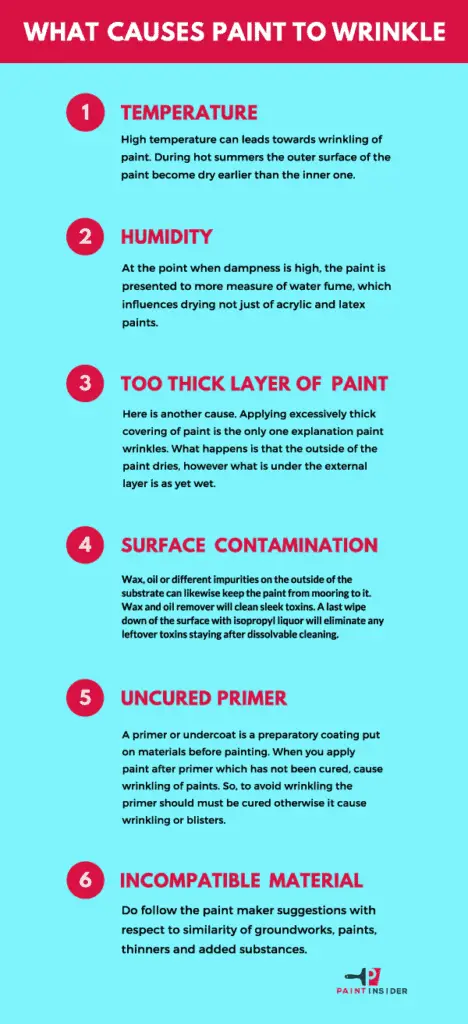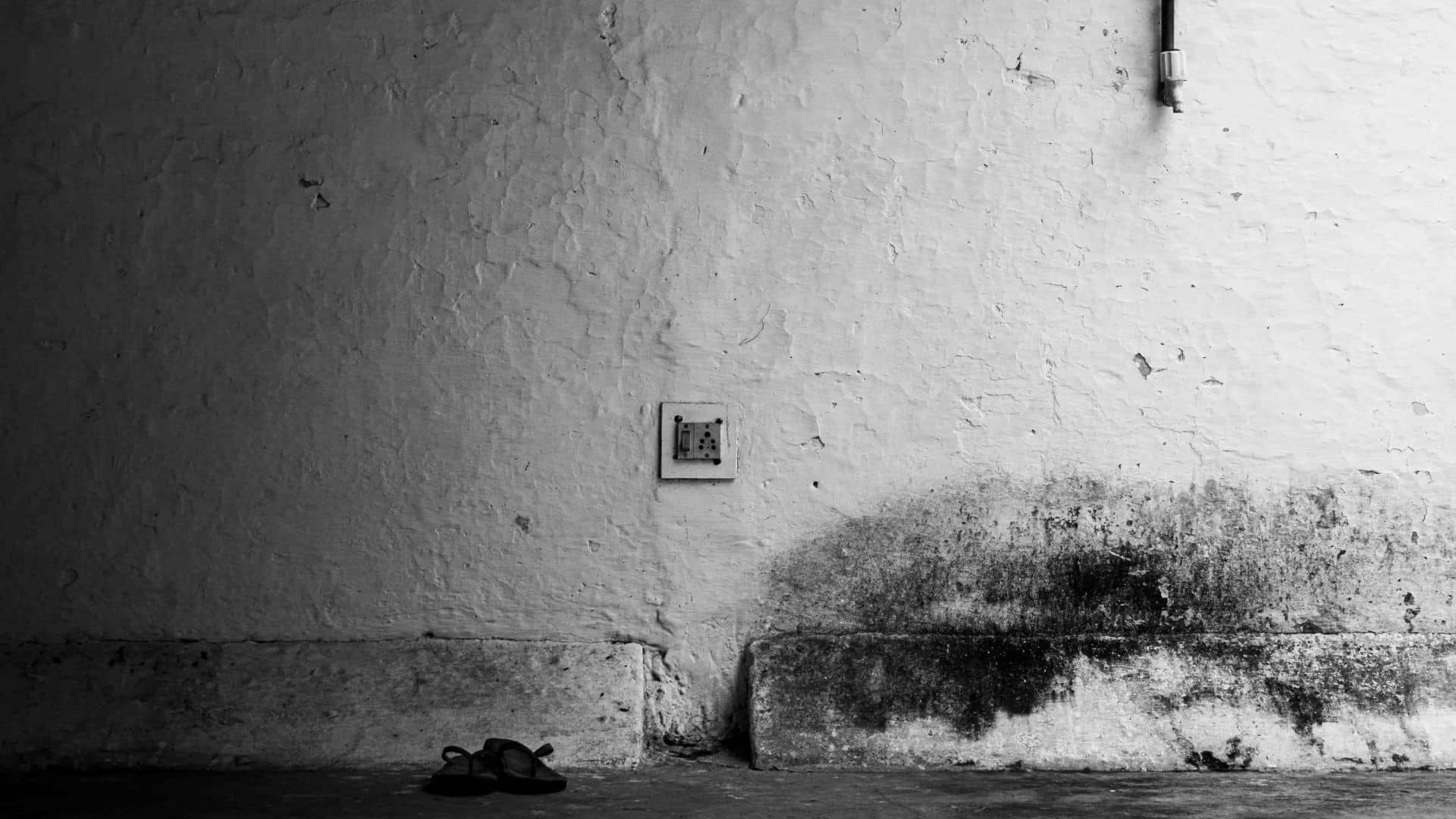Have you ever meticulously painted a surface, only to find that the once smooth finish is now marred by unsightly wrinkles and creases? The frustrating phenomenon of paint wrinkling can turn a perfectly planned project into a disaster in a matter of moments. Understanding the root causes behind this issue is crucial for both professional painters and DIY enthusiasts alike. In this article, we delve into the complex world of paint chemistry to uncover the mysteries of what causes paint to wrinkle. From incompatible materials to improper application techniques, we will explore the various factors that can lead to this unwanted effect, providing valuable insights to help you achieve flawless finishes every time. Let’s unravel the secrets behind paint wrinkling and empower you with the knowledge needed to overcome this common painting pitfall.
Some factors that cause paint to wrinkle:
- Temperature
- Humidity
- Too thick layer of paint
- Surface contamination
- Uncured primer
- Incompatible material

how Does Temperature Cause Paint To Wrinkle?
When temperatures are too high during the painting process, the solvents and binders in the paint can evaporate too quickly, creating a wrinkled surface. This rapid evaporation results in insufficient time for the paint to level out properly, leading to uneven drying and ultimately causing wrinkles to form. Additionally, extreme temperature fluctuations can cause thermal stress on the painted surface, further contributing to wrinkling.
To prevent paint wrinkling due to temperature, it is essential to follow manufacturer guidelines regarding ideal painting conditions. Using paints specifically formulated for high-temperature applications can also help mitigate the risk of wrinkling. Proper ventilation and humidity control in painting environments are crucial factors in ensuring that paint dries uniformly and does not wrinkle due to temperature variations. By understanding how temperature influences the drying process of paint, painters can take proactive steps to achieve smooth and flawless finishes on their projects.
how Does Humidity Cause Paint To Wrinkle?
Excessive humidity can wreak havoc on freshly painted surfaces, leading to the frustrating issue of wrinkling. The presence of moisture in the air interferes with the paint’s drying process, preventing it from setting properly. As a result, the paint can form unsightly wrinkles and bubbles as it struggles to adhere to the surface.
Furthermore, high humidity levels can also slow down the evaporation of solvents present in paints, causing them to remain wet for longer periods than intended. This prolonged drying time exacerbates the chances of wrinkling occurring. To prevent this issue, it is crucial to choose low-humidity days for painting projects and ensure proper ventilation during and after application to facilitate faster drying.
By understanding how humidity impacts paint quality is essential for achieving smooth and professional finishes, and taking precautionary measures against excessive moisture in the air and following proper painting techniques, you can minimize the risk of wrinkling and other related problems that hinder your painting projects’ success.
How does “Too thick layer of paint” cause paint to wrinkle?
When a too-thick layer of paint is applied, it can cause the paint to wrinkle due to a variety of factors. One key reason is that the excessive thickness prevents proper drying and curing of the paint underneath. This inhibits proper adhesion and leads to wrinkling as the top layer dries faster than the layers below.
Additionally, when a thick coat of paint is applied, there is often an uneven distribution of solvents throughout the layers. This imbalance results in improper drying rates between layers, contributing further to wrinkling issues. Understanding how different layers interact during the drying process can help prevent this problem and ensure a smooth finish on your painted surface.
To avoid wrinkling caused by applying too thick of a layer of paint, it’s important to follow manufacturer guidelines regarding application thicknesses and drying times. Taking care to apply thin, even coats will promote proper drying and adhesion, resulting in a professional-looking finish without any unwanted wrinkles.
How does Surface contamination enhance the wrinkling issue?
Surface contamination can have a significant impact on the quality and appearance of paint application, leading to undesirable wrinkling. When contaminants such as dust, oils, or grease are present on the surface before painting, they can interfere with the adhesion of the paint and cause it to wrinkle during drying. These impurities create barriers that prevent the proper bonding between the paint and the surface, resulting in an uneven texture and wrinkled finish.
Additionally, certain chemicals found in contaminants can react with components in the paint formula, causing chemical changes that lead to wrinkling. This reaction disrupts the drying process and inhibits the formation of a smooth, uniform film. Therefore, proper surface preparation is essential to ensure a clean and contaminant-free substrate for optimal paint adhesion and finish. By identifying potential sources of contamination and implementing effective pre-painting cleaning procedures, painters can minimize the risk of wrinkling and achieve high-quality results that meet expectations.
How Does Uncured Primer Make Paint to Wrinkle?
When uncured primer is applied as a base coat before painting, it can lead to paint wrinkling issues. The main reason for this is the uneven surface created by the uncured primer. When fresh paint is applied on top of a primer that has not fully dried or cured, it does not adhere properly and can start to wrinkle as the solvents in the paint interact with the uncured surface.
Additionally, the moisture trapped underneath the uncured primer can cause further problems by creating blisters in the paint layer above. This results in an unattractive and uneven finish that may require stripping and repainting to correct. To avoid this issue, it is crucial to follow proper drying times for primers before applying any topcoat of paint, ensuring a smooth and durable finish that will last for years to come.
How Do Incompatible materials contribute to wrinkling issue?
When incompatible materials are used together in a paint mixture, an adverse reaction occurs that can cause the paint to wrinkle. This often happens when different types of paints or additives are combined without proper compatibility testing. The interaction between the chemicals in each material can lead to inconsistencies in drying times, adhesion issues, and ultimately wrinkling of the paint once it dries.
To avoid this problem, it is crucial to carefully review the product specifications and compatibility guidelines of all materials being used in a painting project. Additionally, conducting small-scale tests before applying the paint on a larger surface can help identify any potential issues early on. By ensuring that only compatible materials are used together, painters can achieve a smooth and professional finish that is free from wrinkles or other imperfections.
In conclusion, paint wrinkling can be caused by a variety of factors such as improper surface preparation, application in extreme temperatures, incompatible paint layers, or inadequate drying time. Understanding these potential causes is crucial in preventing this issue and achieving a smooth finish. By following proper painting techniques, using high-quality materials, and ensuring optimal working conditions, you can minimize the risk of paint wrinkling and produce professional results. Remember to always read and follow the manufacturer’s instructions to avoid any potential pitfalls. Take proactive measures to address any underlying issues to maintain the integrity of your paint job.

